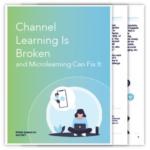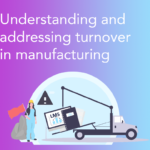Microlearning is the concept of breaking down learning into small pieces of information that only require a few minutes to process, making it is easier for our brains to process and understand. Microlearning is gaining in popularity due to growing research that suggests it is a better learning format than a lecture, presentation or more traditional longer-form learning methods, and because it more closely resembles the patterns of how we consume other content on mobile devices and websites, such as social media platforms, text messaging, etc.
Advantages of the Microlearning format
Improved knowledge retention
Breaking down information into a smaller format actually increases our ability to remember that information. A recent microlearning-specific study by the University of Dresden tested students and compared test results for the same information presented in two different learning formats: traditional (long format) and microlearning. Students who learned in small chunks answered questions in 28% less time and did 20% better on answers than the student learning in a more traditional format![1]
Increased convenience as delivery is better suited to mobile formats
Creating learning content that mimics the consumption patterns and format of our daily patterns increases the likelihood people will engage with the content. Having constant access to that content allows a participant to consume learning at any convenient time.
Keeping content up to date is more efficient
Learning is becoming more important at the same time keeping someone’s attention is getting harder. By breaking down learning into microlearning components, the majority of learning elements can also be reused because typical product change only really involves a smaller percentage of parts of features. The microlearning format not only saves a great deal of time and money, it easier to focus attention on the new learning elements for people consuming the learning content.
Integrating and combining content to make learning more customized
Most people have a preference of learning modality, written vs visual for example. Microlearning provides more flexibility in curriculum design because it is easy to customize different pieces of content without having to customize an entire learning module. This customization value also extends to cultural or linguistic preferences.
Easier reinforcement and mastery
One of the key findings from recent microlearning research is that small, frequent quizzes improve retention by 20% compared to learning through a traditional long format video or lecture with one test at the end. Measuring mastery in this way also more clearly highlights retention problems that could exist because of curriculum design – ensuring the information is being communicated in a way that makes it easy for people to comprehend.
Increased motivation opportunities
Research clearly shows time plays an important role in learning and motivation. The shorter format of microlearning creates more immediate opportunities to recognize success and increase motivation of the participant. This is important because giving small, immediate incentives is 3x more effective than one large reward at the end. For example, giving three $10 rewards for completing each third of a task, has the same impact as a $90 incentive for a whole task!
Managing learning friction points
Microlearning is made up of many individual elements that provide clear lines between learning components and distinct concepts. This allows the person designing or administering a learning program to identify friction points impacting the program. As a chain is only as strong as its weakest link, the same is true for a learning program and its respective learning elements.
About Whistle
Whistle is the first learning platform to integrate the key elements of behavior change – ability (microlearning), motivation (micropayments and recognition), cues (AI informed nudges and recommendations) while removing friction (simplified design and mobile centric approach). Together these multiply the impacts of microlearning to maximize the impact on business outcomes.








